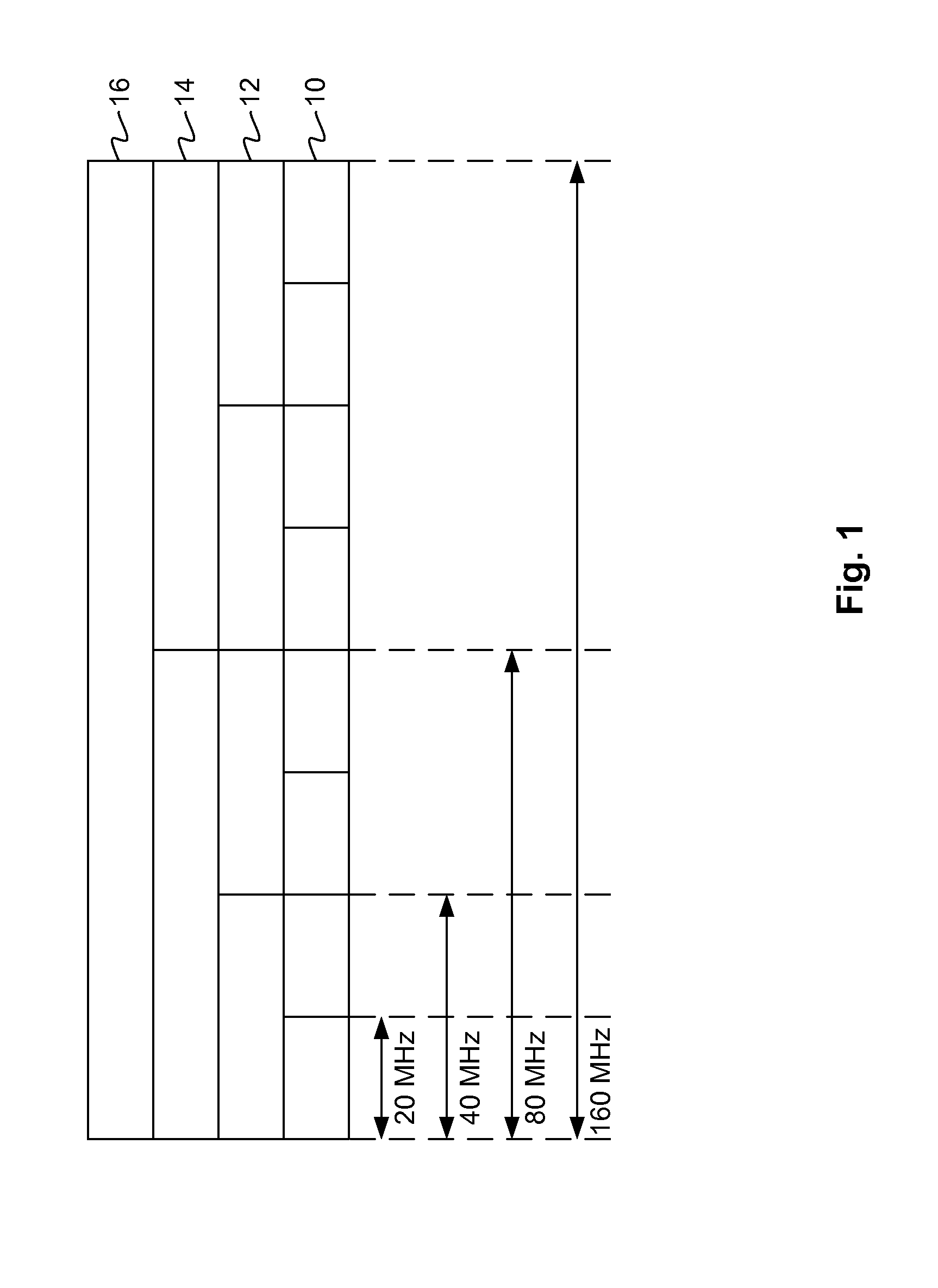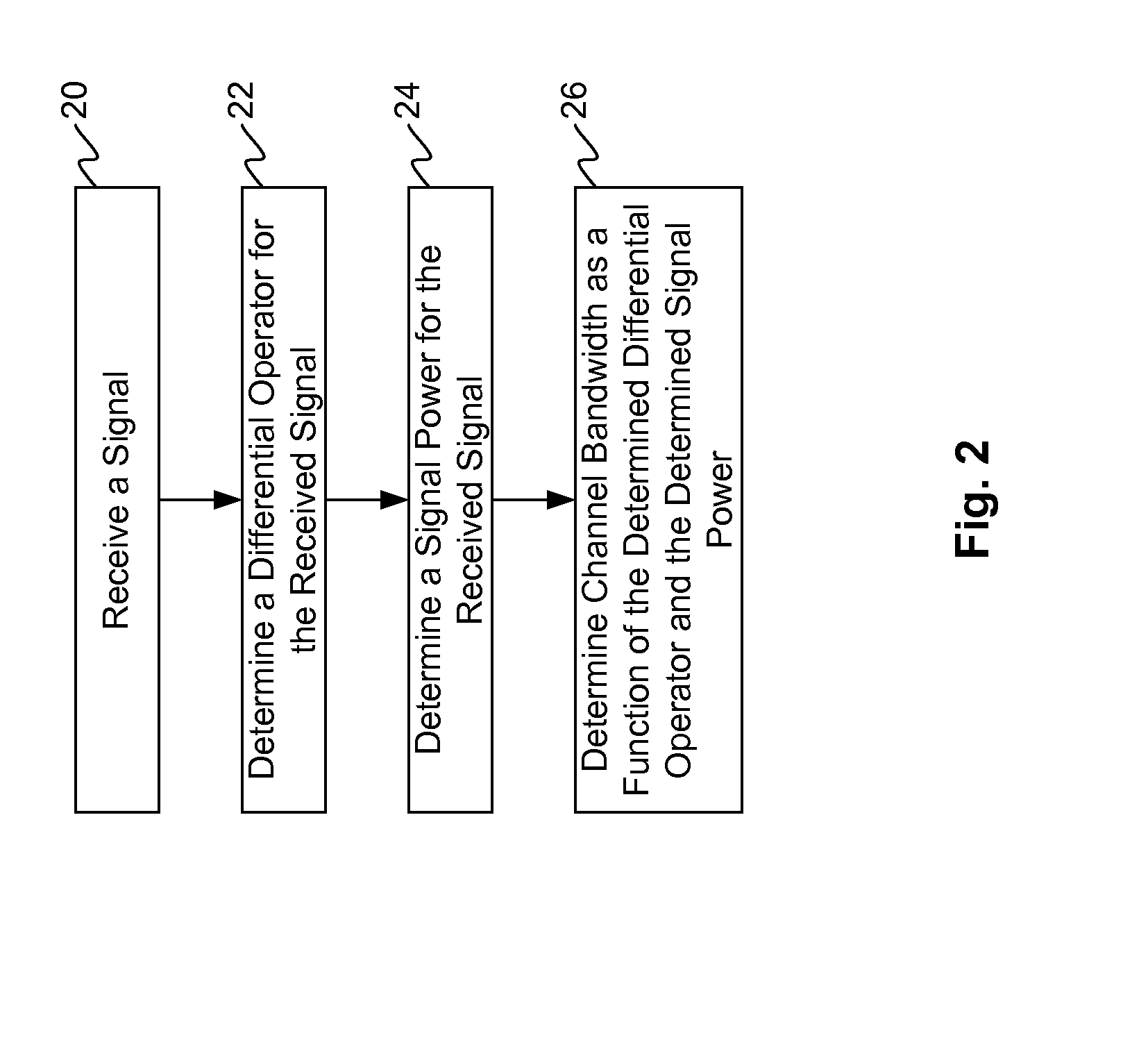Channel Bandwidth Detection
a channel bandwidth and detection method technology, applied in the field of channel bandwidth detection, can solve the problem that most users do not know the bandwidth associated with their communications system, and achieve the effect of large frequency offset, efficient and reliable methods and systems for channel bandwidth detection
- Summary
- Abstract
- Description
- Claims
- Application Information
AI Technical Summary
Benefits of technology
Problems solved by technology
Method used
Image
Examples
Embodiment Construction
[0017]In the following detailed description of the embodiments, reference is made to the accompanying drawings, which form a part hereof, and in which is shown by way of illustration of specific embodiments in which the present invention may be practiced. The following illustrations provide an example for determining whether a 20 MHz or 40 MHz channel bandwidth is used for a WLAN signal. However, it is understood by a person having ordinary skill in the art that the present invention can be applied for determining a channel bandwidth for any number of WLAN standards and for more than two channel bandwidths.
[0018]Typically, a transmitter, e.g., an access point, can use a 20 MHz channel bandwidth or a 40 MHz channel bandwidth to transmit a signal to a receiver, e.g., a laptop or mobile phone. The transmitter can dynamically change the channel bandwidth based upon the availability of the 40 MHz bandwidth. Thus, the receiver must detect whether the signal is transmitted via a 20 MHz cha...
PUM
 Login to View More
Login to View More Abstract
Description
Claims
Application Information
 Login to View More
Login to View More - R&D
- Intellectual Property
- Life Sciences
- Materials
- Tech Scout
- Unparalleled Data Quality
- Higher Quality Content
- 60% Fewer Hallucinations
Browse by: Latest US Patents, China's latest patents, Technical Efficacy Thesaurus, Application Domain, Technology Topic, Popular Technical Reports.
© 2025 PatSnap. All rights reserved.Legal|Privacy policy|Modern Slavery Act Transparency Statement|Sitemap|About US| Contact US: help@patsnap.com



